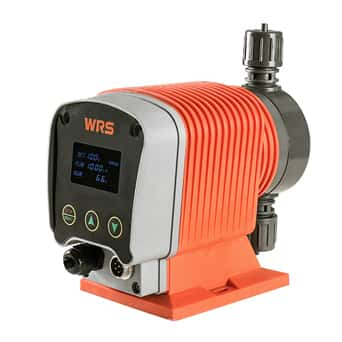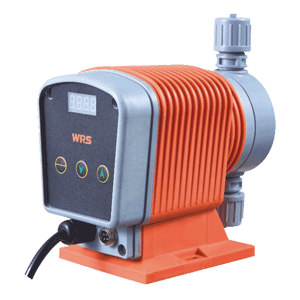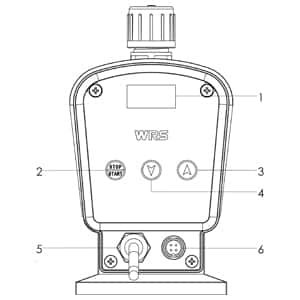Solenoid Driven Chemical Dosing Pump
- Home
- Solenoid Driven Chemical Dosing Pump

ML SERIES
Manual Control Solenoid Dosing Pump
Flowrate: 1 – 20 LPH
Pressure: 10 – 1 Bar
Material: PVC / PVDF / SS304 / SS316
Flowrate Control: Manual Only

MLS SERIES
Signal Control Solenoid Dosing Pump
Flowrate: 1 – 20 LPH
Pressure: 10 – 1 Bar
Material: PVC / PVDF / SS304 / SS316
Flowrate Control: Pulse / 4-20mA Signal Control
What is a Solenoid Driven Dosing Pump?
A dosing pump, also commonly known as metering pump or chemical injection pump. It is categorized under positive displacement pump family. The main purpose of a dosing pump is to accurately dose chemical into a system. There are various type of dosing pump such as piston, peristaltic, diaphragm and hydraulic diaphragm. ML & ML-S dosing pump is a microprocessor-controlled solenoid diaphragm type dosing pump.
How does it work?
Solenoid metering pump is the use of electromagnetic push rod driven diaphragm in the pump head reciprocating movement, causing the pump head chamber volume and pressure changes. Changes in pressure caused by suction valve and discharge valve opening and closing, to achieve quantitative liquid suction and discharge. A magnet moves the solenoid shaft forwards and backwards by switching on and off. This stroke movement is transferred to the diaphragm in the dosing head. Two non-return valves prevent the feed chemical from flowing back during pumping. But that’s not all. The stroke length and stroke rate can be adjusted to alter the capacity of a ProMinent solenoid-driven metering pump.
- Frequency Display
- Start/Stop Button
- Increase Button

- Decrease Button
- Power Cable
- Signal Plug(Only for ML-S)
The difference between ML & MLS series
The main difference between ML and MLS series is the option for connecting to a signal control source. The MLS model have an additional plug for pulse signal or 4-20mA signal. While the ML model does not have this plug. Other than that, all parameters are the same.
Common Applications
- Potable water treatment: Metering of disinfectants
- Cooling circuits: Metering of corrosion inhibitors and biocides
- Waste water treatment: Metering of flocculants
- Paper industry: Metering of additives
- Plastics production: Metering of additives
What are the advantages?
Because there is only one moving part, the drive is virtually wear-free. The pump requires no lubricated bearings or shafts; the maintenance and repair costs are therefore very low. The continuous running characteristics are excellent.
How to choose a solenoid pump?
- Specify pump capacity in litres per hour [l/h]
- Specify back pressure in bar
- Find the intersection of these two values and select the pump type that lies nearest to it
